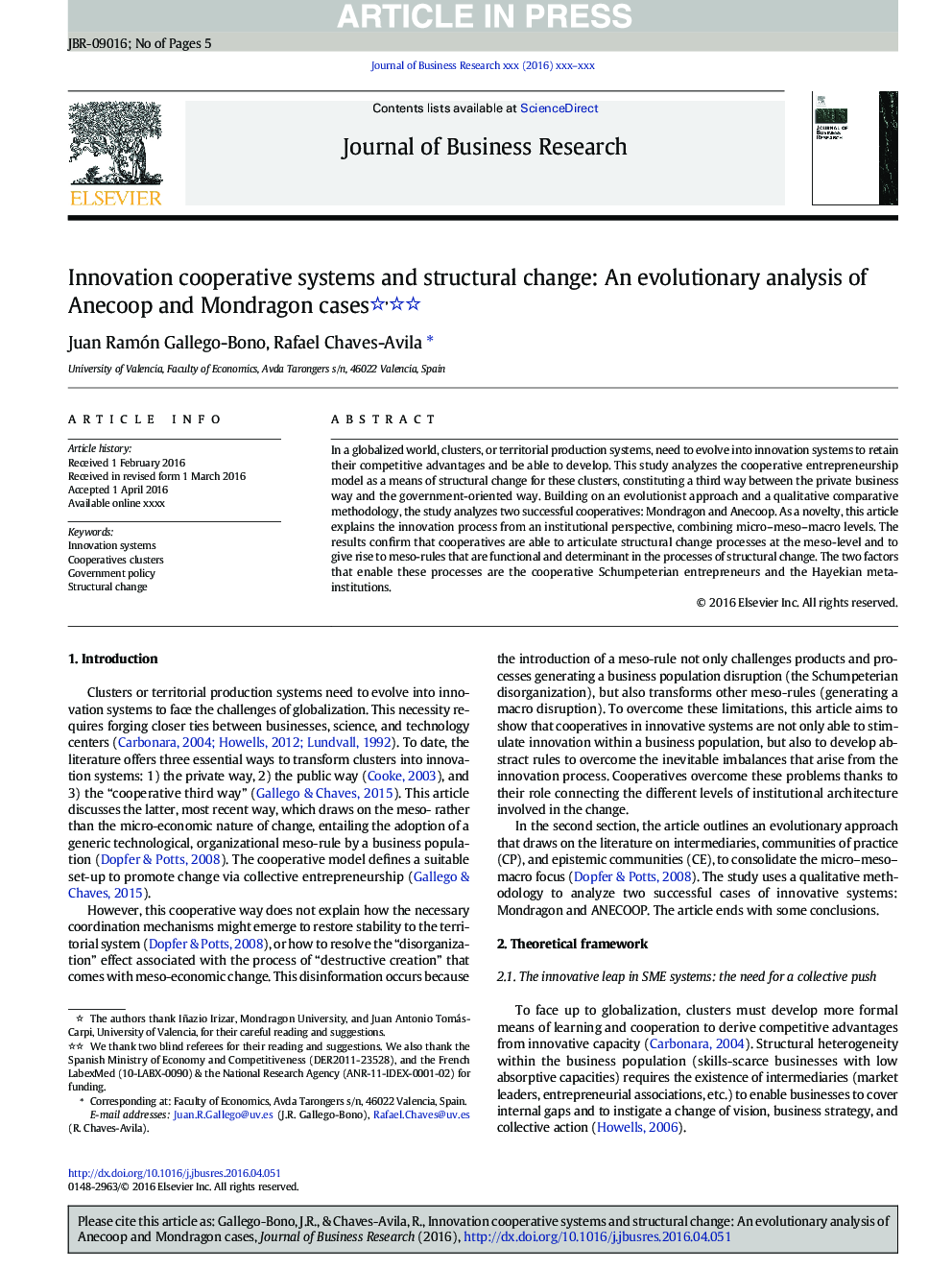| Article ID | Journal | Published Year | Pages | File Type |
|---|---|---|---|---|
| 5109719 | Journal of Business Research | 2016 | 5 Pages |
Abstract
In a globalized world, clusters, or territorial production systems, need to evolve into innovation systems to retain their competitive advantages and be able to develop. This study analyzes the cooperative entrepreneurship model as a means of structural change for these clusters, constituting a third way between the private business way and the government-oriented way. Building on an evolutionist approach and a qualitative comparative methodology, the study analyzes two successful cooperatives: Mondragon and Anecoop. As a novelty, this article explains the innovation process from an institutional perspective, combining micro-meso-macro levels. The results confirm that cooperatives are able to articulate structural change processes at the meso-level and to give rise to meso-rules that are functional and determinant in the processes of structural change. The two factors that enable these processes are the cooperative Schumpeterian entrepreneurs and the Hayekian meta-institutions.
Related Topics
Social Sciences and Humanities
Business, Management and Accounting
Business and International Management
Authors
Juan Ramón Gallego-Bono, Rafael Chaves-Avila,
